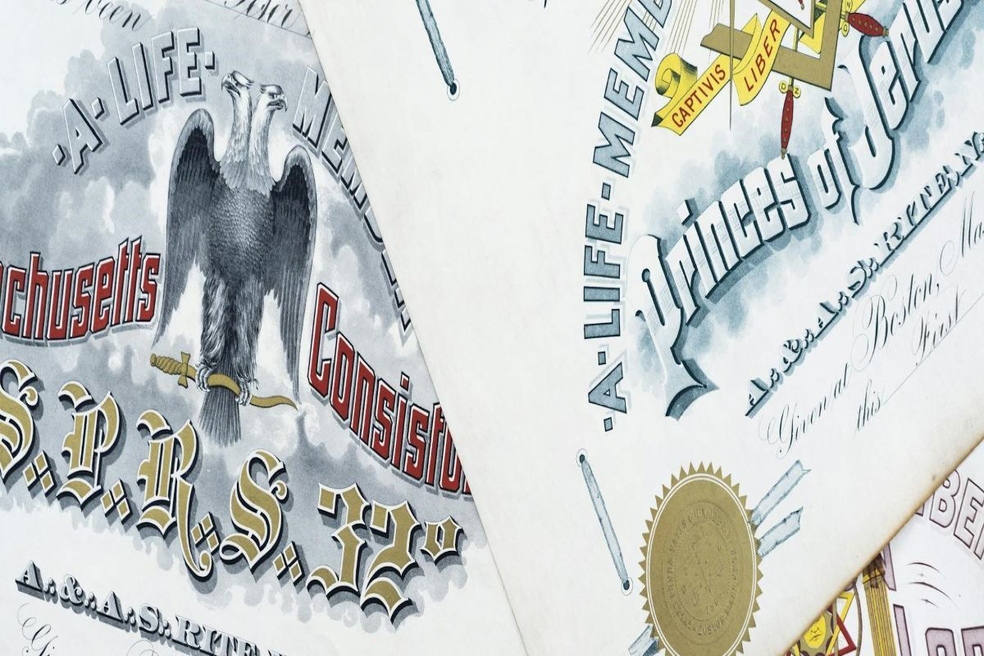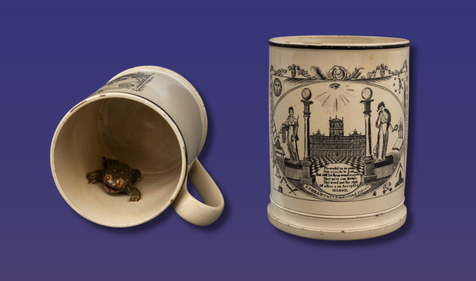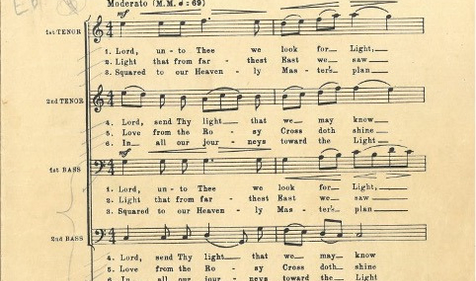The Consistory of the Scottish Rite, NMJ is responsible for conferring the 19th through the 32nd degrees.
32° Scottish Rite Freemasonry is built upon six Core Values: Reverence for God, Devotion to Country, Integrity, Justice, Tolerance, and Service to Humanity. The 29 degrees of the Scottish Rite serve as allegories that demonstrate how a Mason can apply these Core Values to his life while exploring the ethical teachings of the Blue Lodge in greater depth.
What is the Consistory?
The word "Consistory" derives from the Latin word consistere, meaning "stand firm," ultimately leading to the term consistorium or "assembly place." The Romans used the term to describe either a council of the advisors of Roman emperors or the papal Consistory, a meeting of the College of Cardinals of the Roman Catholic Church. In Scottish Rite Freemasonry, however, Consistory refers to a Supreme Council-approved assembly of Masonic officers that grants degrees.
Sometimes referred to as the "Traditional," Chivalric," and "Modern" degrees, the Consistory degrees exemplify the challenges of social and moral conflicts, drawing on lessons from the age of chivalry through the modern day.
History of the Consistory
The history of Consistories predates the Scottish Rite by centuries, originating in ancient Rome. In the Roman government, the Consistory consisted of high magistrates or government officials in the empire who served as a council to the emperor.
While Scottish Rite Consistories date back to early American fraternalism, they were not always consolidated under the Supreme Councils. In fact, during the first half of the 19th century, the bodies of the Scottish Rite were not united at all. When Sovereign Grand Commander Josiah Hayden Drummond, 33º was elected to lead the Supreme Council of the Northern Masonic Jurisdiction after the Union of 1867, he had three top priorities: adoption of a unifying constitution, consolidating its bodies, and establishing bodies where none existed, primarily Vermont and Delaware.
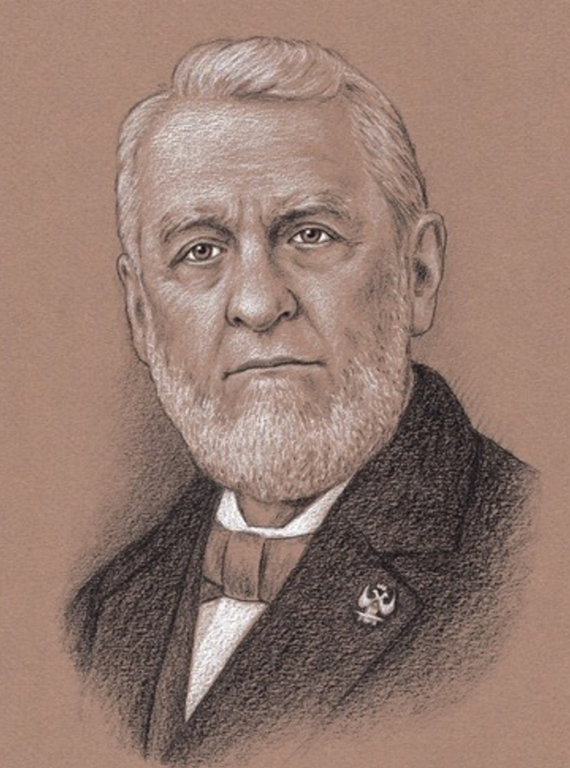
Commander Drummond succeeded in consolidating bodies into 50 Valleys, with approximately 20 members per body. At that time, Consistory membership accounted for about two-thirds of the membership of the Lodge of Perfection. In the wake of this achievement, membership in the entire jurisdiction increased tenfold between 1893 and 1943.
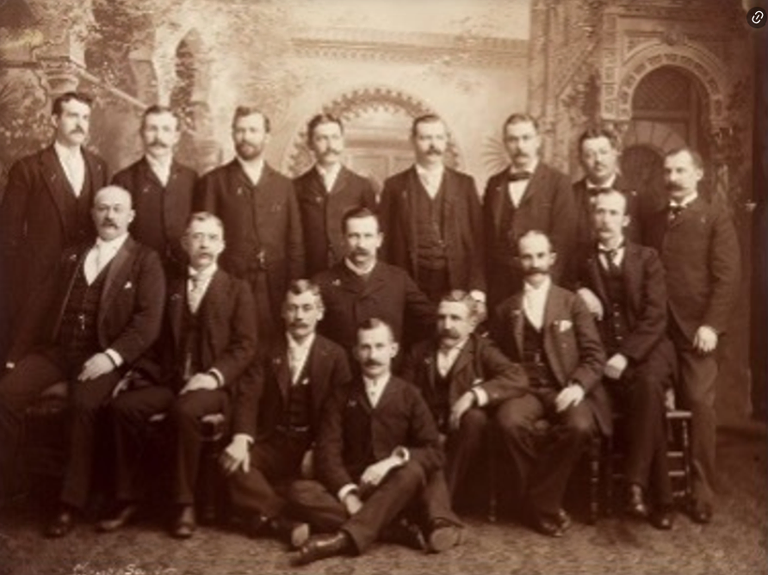
Today, there remains some variation between the Consistories in the Northern Masonic Jurisdiction and the Southern Masonic Jurisdiction. This is partly due to the NMJ's efforts to revise or replace degree rituals as necessary, as it did for several Consistory degrees in the 1970s. These alterations are intended to make the rituals easier for Valleys to perform and reflect updated thinking to meet the needs of modern Freemasons.
In contemporary Scottish Rite Freemasonry, Consistories are the meetings of members of the 32° or Sublime Princes of the Royal Secret in the Ancient and Accepted Scottish Rite. The elective officers for NMJ Consistories include a Commander-in-Chief, Lieutenant-Commanders, Chancellor, Minister of State, Almoner, Registrar, and Treasurer. The Southern Jurisdiction is slightly different with the second and third officers being called Seneschal and Preceptor, respectively. A Consistory in the Northern Jurisdiction confers the 19° through 32°, while in the Southern Jurisdiction, it confers only the 31° and 32°.
The Consistory Emblem and Cap
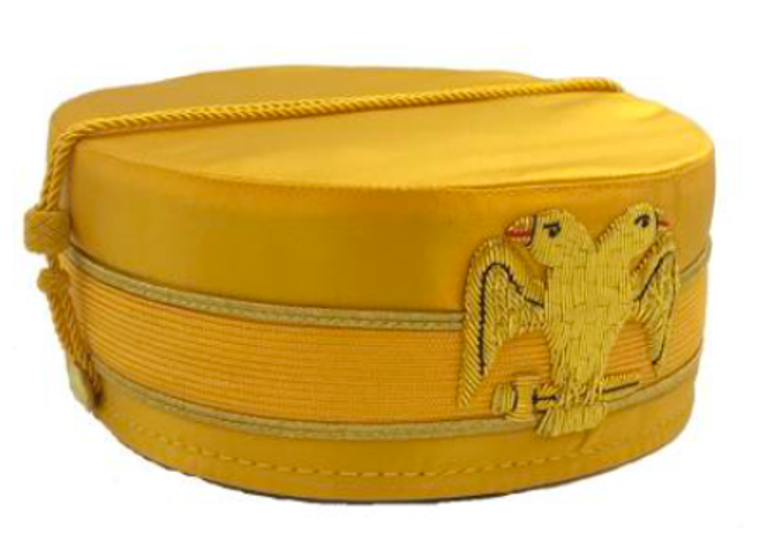
A unique symbol represents each body of the Scottish Rite. The Consistory is perhaps the most recognizable, for it is the famous emblem representing the entire fraternity: the double-head eagle. The figure is emblazoned on the Consistory cap. These pieces of regalia may be worn by elected Consistory officers.
Degrees of the Consistory
As with Masonic ritual, whether in the Blue Lodge, the Scottish Rite, or another appendant body, the degrees found in the Consistory can take years to comprehend thoroughly. Even after becoming 32° Scottish Rite Freemasons, members routinely revisit the Chivalric degrees to derive new insights from these rituals.
Here are brief summaries of the allegories and ethical teachings found in the Consistory degrees in the Northern Masonic Jurisdiction:
19° - Brothers of the Trail
Along the Oregon Trail in the 1840s, one pioneer lives up to his sacred obligation to care for his Brother.
Philosophy: A Mason's word is good as gold any place in the world where a man's word still counts for something.
Core Values: Reverence for God & Integrity
20° - Master Ad Vitam
Benedict Arnold seeks pardon for his treason.
Philosophy: Treason is a crime over which Masonry casts no mantle of charity.
Core Values: Devotion to Country & Integrity
21° - Patriarch Noachite
Knights and Nobles come together to punish crime, reward virtue, protect the innocent, and provide aid to the needy.
Philosophy: Freemasonry is not a shield for evil doing.
Core Values: Justice
22° - Prince of Libanus
A Brother is introduced to wood cutters who test his willingness to put aside his rank and status.
Philosophy: Honest work is honorable and noble in the sight of God and man.
Core Values: Service to Humanity
23° - Knight of Valor
Based on a true incident during World War II and the heroic actions of the Four Chaplains.
Philosophy: This degree teaches us that faith in God will find expression in love for our fellow man, even to the ultimate personal sacrifice.
Core Values: Reverence for God, Tolerance, Devotion to Country & Service to Humanity
24° - Brother of Tolerance
A Native American petitions for membership in a colonial Symbolic Lodge.
Philosophy: Freemasonry is a universal Brotherhood.
Core Values: Tolerance
25° - Master of Achievement
Industriousness is shown through the life of Brother Benjamin Franklin.
Philosophy: The wages of a Mason are earned and paid in their dealing with one another.
Core Values: Devotion to Country & Service to Humanity
26° - Friend and Brother Eternal
While on opposite sides of the Civil War, two officers maintain their Masonic principles.
Philosophy: Masonic unity and harmony transcend conflict.
Core Values: Devotion to Country & Integrity
27° - Knight of Jerusalem
A historic clash between Pope Honorius III and Emperor Frederick II.
Philosophy: When tensions arise between church and state, one must be governed by his conscience.
Core Value: Tolerance
28° – Knight of the Sun
This degree shows Masonry's transformation from an operative guild to a speculative moral fraternity.
Philosophy: The working tools of the builders' art are used to express unique qualities of moral instruction.
Core Values: Integrity
29° - Knight of St. Andrew
Masonic teachings and tolerance resolve an incident in Europe's long wars between Islam and Christianity.
Philosophy: No one religion has a monopoly on truth.
Core Value: Tolerance
30° – Grand Inspector
A 14th-century trial in the English civil court during the reign of Edward II is conducted.
Philosophy: To be attentive, impartial, and equitable in judging others.
Core Values: Justice
31° - My Brother's Keeper
While attending St. Andrew's Lodge at the Green Dragon Tavern, Brothers Warren and Dawes come to the aid of an injured Brother.
Philosophy: The degree reinforces our call to service in the fraternity.
Core Values: Integrity & Service to Humanity
32° Degree – Sublime Prince of the Royal Secret
The degree dramatically teaches us to choose between personal advancement and service to humanity.
Philosophy: The degree represents the victory of the spiritual over the human in man.
Core Values: Devotion to Country & Service to Humanity
Many members of the Scottish Rite consider The Sublime Prince of the Royal Secret to be their favorite degree. It is a moving ritual that challenges our natural inclination to preserve our self-interest. It describes the triumph over our appetites and passions by moral sense and reason and the spiritual joy of serving our fellow man. It is a fitting message to reside at the top of the Scottish Rite teachings, distilling the philosophies first introduced in the Blue Lodge into a moving ritual no man can easily forget.
Members of the Scottish Rite, NMJ seek to aid mankind's search for identity and destiny in God's universe. However, producing wiser, happier men to create a better world that promotes the dignity of every person is not always a linear process. The men of the Scottish Rite return to the Valleys to learn from our Masonic ancestors how to better serve our communities in the face of daily distractions and pressures. The lessons found in the Consistory are among the most sublime, and it's easy to see why our members so value these rituals.
Related Stories
Discover additional Scottish Rite blogs and news on this topic.
